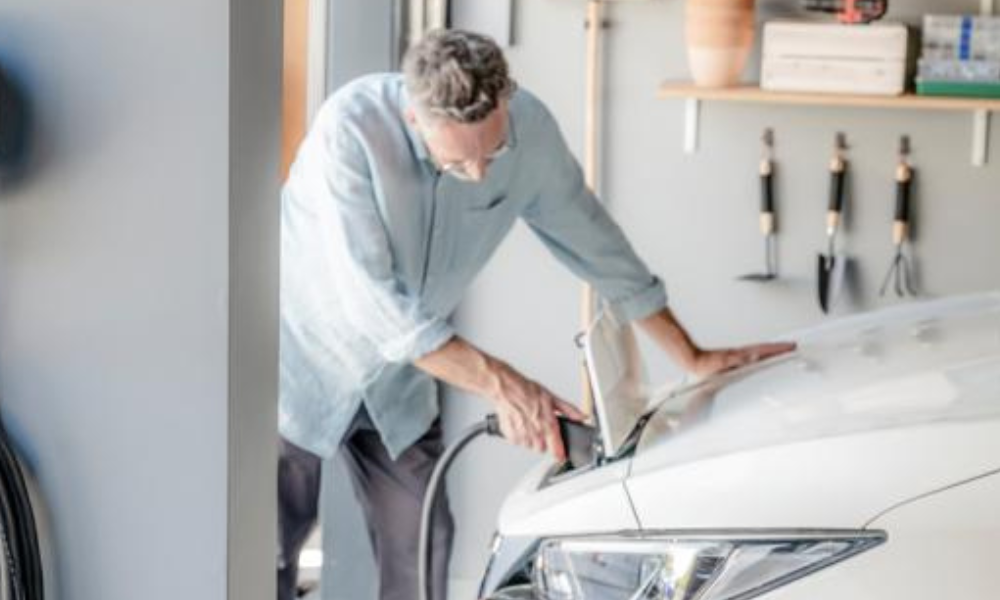To truly benefit from driving an EV, you need to consider how you’ll power it. If you power your electric vehicle with solar, it literally runs on sunshine. But it’s helpful to know just how many panels it takes to keep your EV on the road.
Home vs. Public Charging
There are basically two options for charging an EV: at home or at a public (or commercial) charging station.
Currently, about 80% of EV drivers charge their vehicles at home. And while EVs are great for reducing your fuel needs, charging them increases demand on the electrical grid, no matter what kind of charger you’re using. Your EV is still using non-renewable energy if your home is getting its energy from a grid that uses fossil fuels.
But with a rooftop solar system, you can run your EV on 100% clean energy. And charging at home overnight is much more convenient than searching for public charging stations on an as-needed basis.
How much energy does your EV need to fully charge?
Let’s look at the numbers.
Although the average number of miles people drive differs by state, it’s about 14,000 miles per year, according to the Federal Highway Administration. The average EV can go about 3 miles per kilowatt-hour. So, to power your car annually, you need about 4,666 kWh of additional energy (14,000/3 = 4,666).
So, how many solar panels are needed to offset this additional demand?
Again, some simple math.
Typically, every kW of solar installed on your roof produces roughly 4 kWh/day, or about 1,500 kWh/year. (With some variation depending on weather conditions, location, and seasons.) So, to produce 4,666 kWh of energy, you’d need an additional 3.1 kW system, or 8 to 12 panels, depending on their power output, to run the average EV on solar energy alone.
If you already have solar on your home, should you add more?
It depends on a number of factors. If you find that you still have an electric bill, meaning your system is currently not covering your usage, it may be worth it to add 3 or more kW on your rooftop because the addition of an EV will increase your consumption. Or, if your solar system is meeting your energy needs or maybe even overproducing, a home battery could help you charge your EV at night.
A battery can be programmed to kick in during times of demand (like when your electric car is charging) to use your stored energy instead of pulling from the grid. But a word of caution: solar home batteries are smaller than EV batteries; for full battery charging, your energy storage system may be maxed out while charging the EV.
If you also want to be able to rely on energy storage for power outages, you may still want to add more panels. Whether you decide to add more solar panels or not, SunPower solar systems can help you cut utility costs by generating clean energy during the day.
If you’re considering an EV but don’t have solar yet, what are the first steps?
We say to go solar first, getting clean, renewable energy for your whole home. If you’re planning to charge an EV at home, your usage (and your bill) will increase, but you can offset your household and your EV power usage with the correct amount of solar. We can determine the number of solar panels needed to cover all your energy needs. Plus, you may be able to add a SunVault storage system now or later as your needs grow.
If you want to do your part for the planet while saving money on electricity, powering your EV with solar energy is the perfect option.
Let us answer all of your questions! Go solar with Sunergy Systems and save now and long into the future. Talk to our sales staff or visit us online for more.









